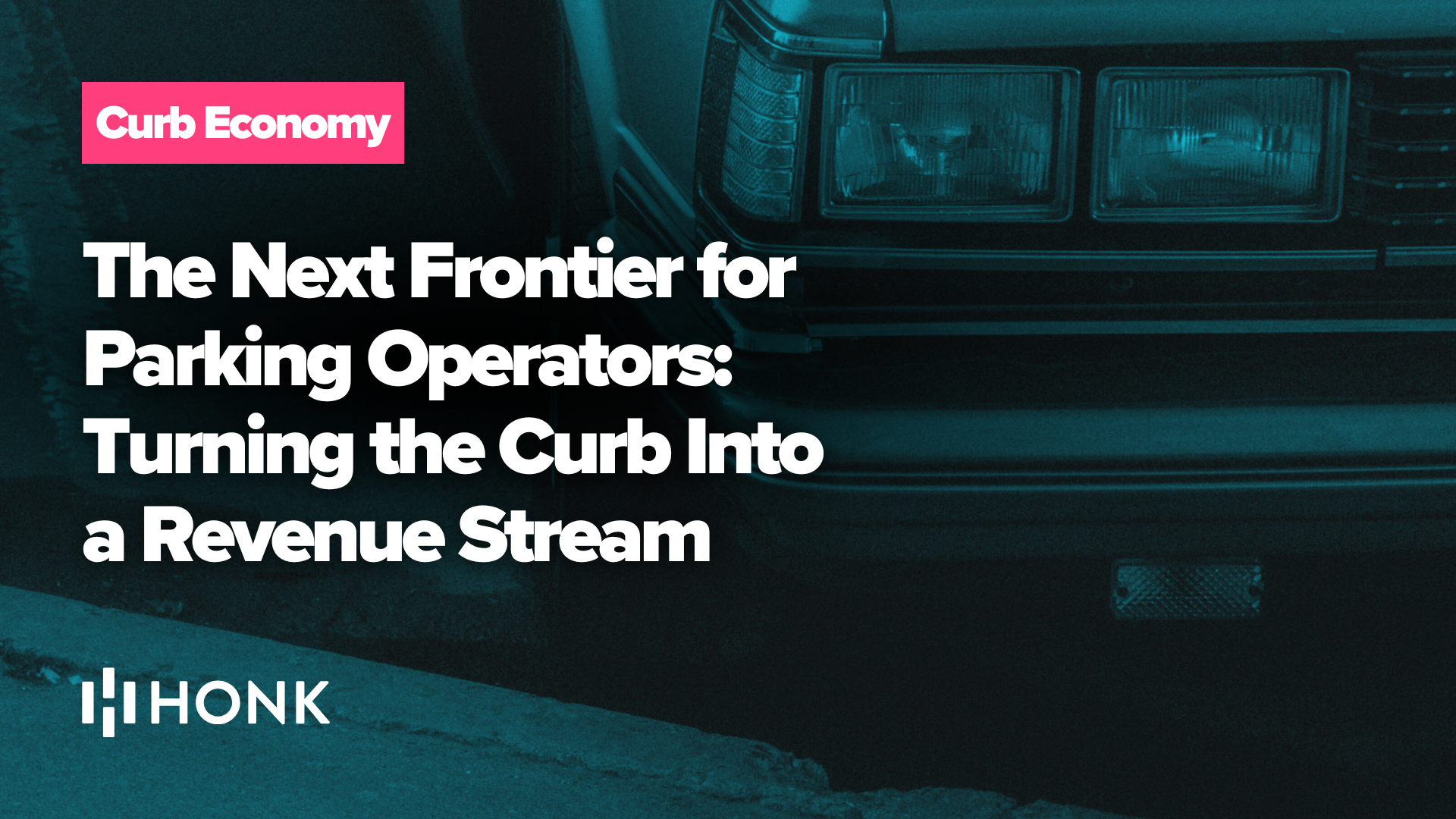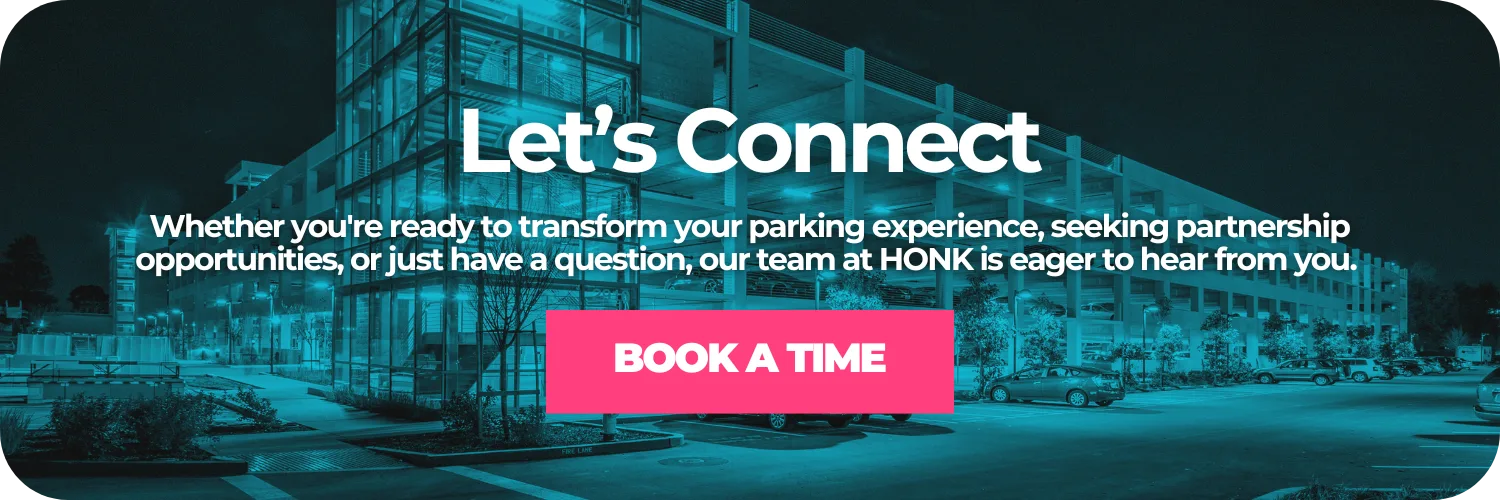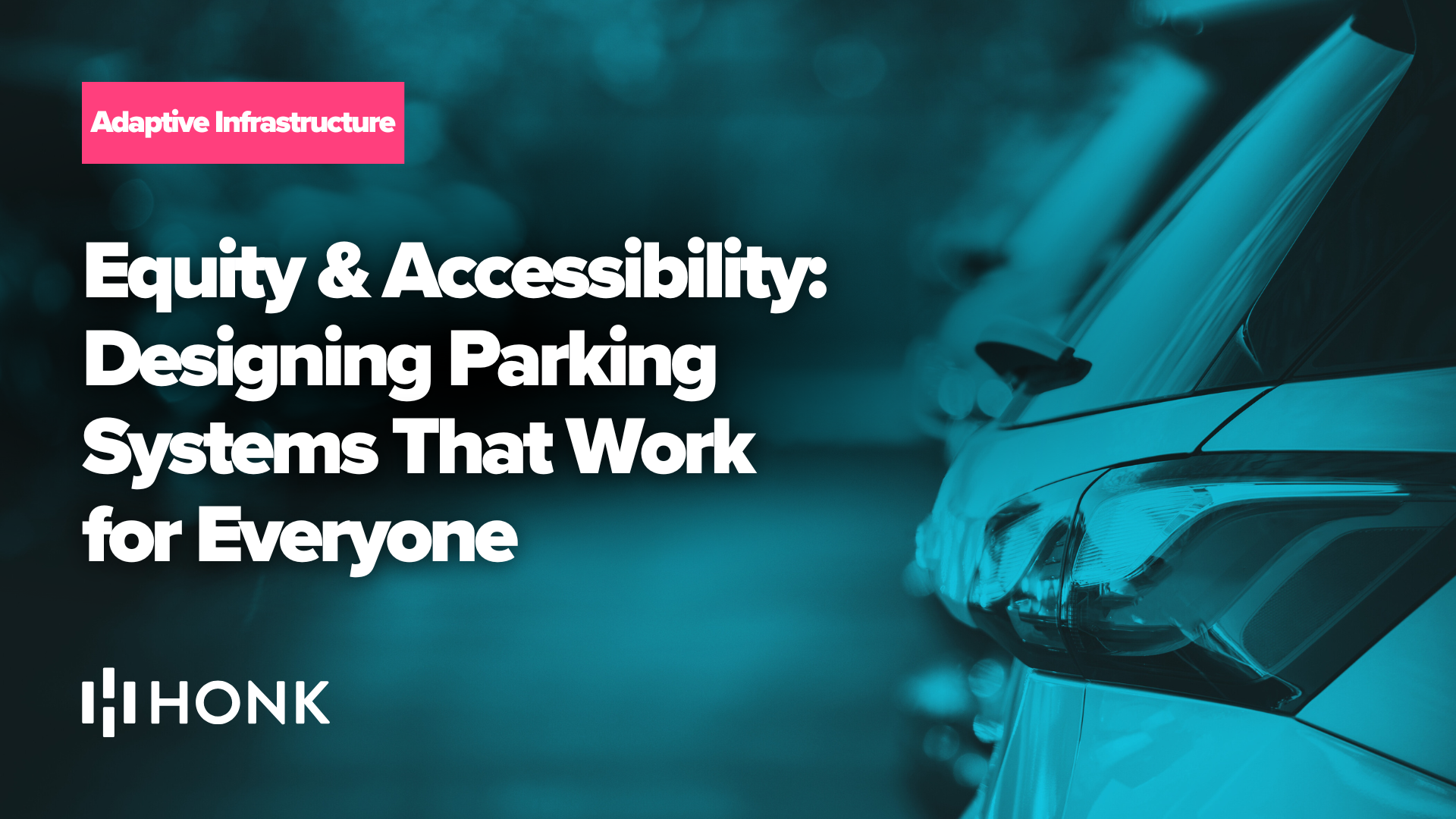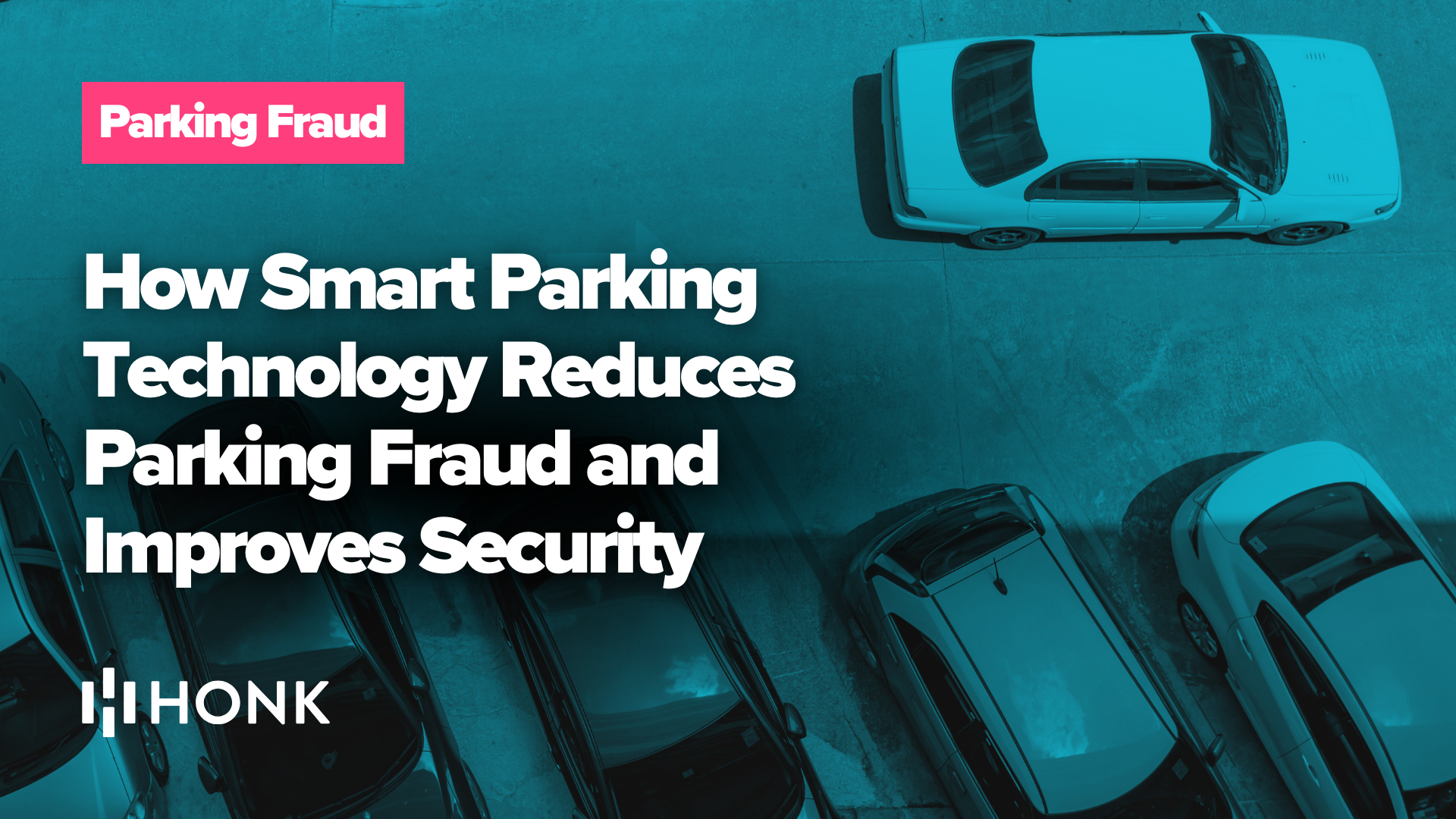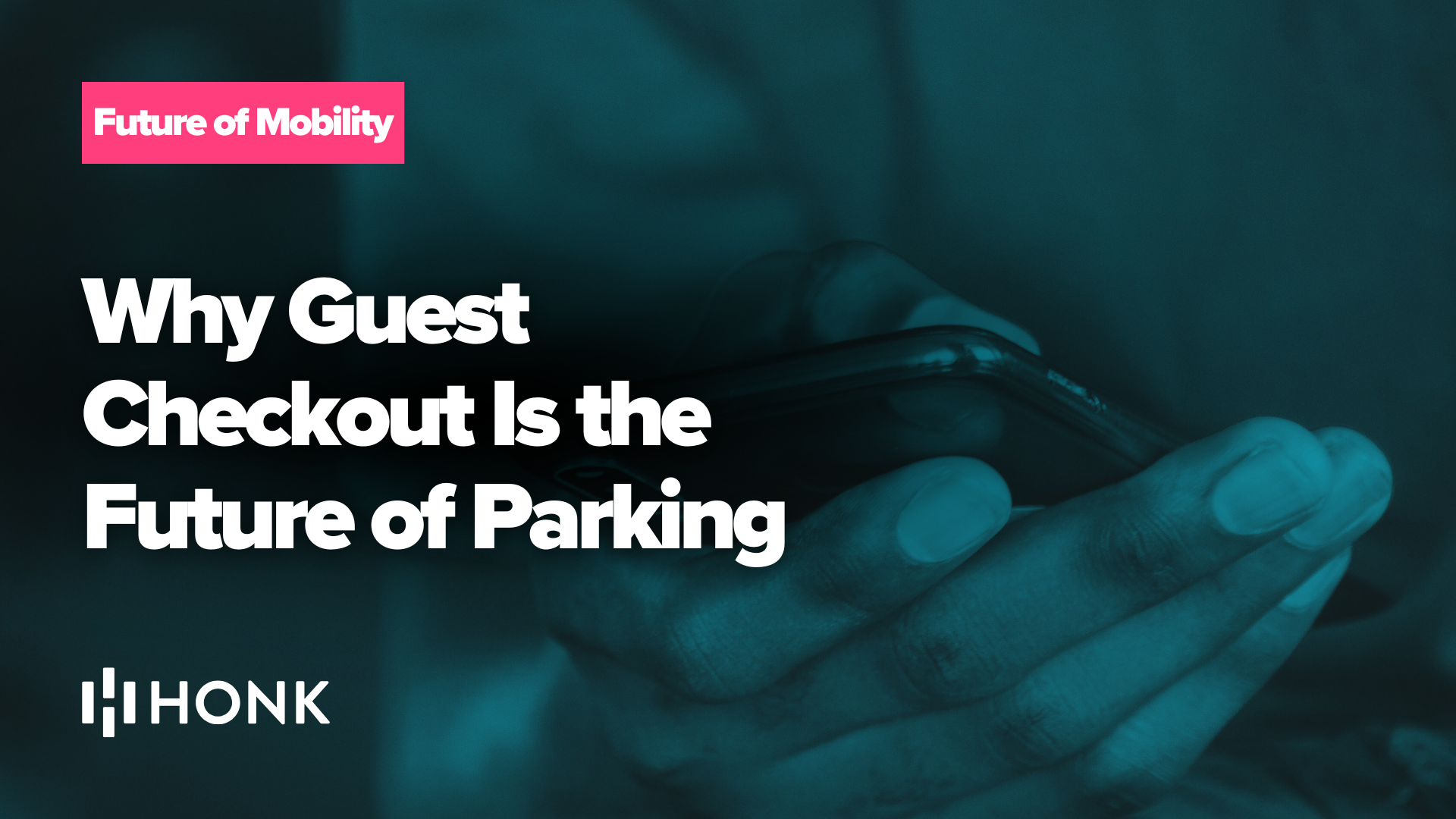At HONK, we believe the future of parking isn’t confined to lots or garages — it’s happening right at the curb.
For decades, the curb has been treated as a static stretch of concrete — a space for loading zones, idle cars, or “no parking” signs. But as cities evolve and mobility patterns shift, the curb is becoming the most dynamic and valuable piece of urban real estate there is. It’s no longer just about where drivers leave their cars; it’s about how people, packages, and vehicles interact with the city in motion.
Parking operators who recognize this transformation early stand to unlock a new source of growth and revenue. Those who don’t risk losing control of the most lucrative part of their asset portfolio.
The Curb Is the New Parking Lot
The numbers tell the story. Rideshare pick-ups, delivery fleets, micro-mobility options, and electric vehicles are all converging on the curb. What used to be a single-purpose zone has turned into a shared battleground. Between Amazon vans, Uber drivers, scooters, and EVs, the curb has become one of the most in-demand — and under-monetized — assets in urban mobility.
Traditionally, operators have optimized for lot turnover, permit management, and occupancy rates. But the curb presents a different metric: yield per linear foot. Every foot of curb space can become a dynamic, revenue-producing asset — if it’s managed digitally.
Cities are also paying attention. Municipalities are exploring “curb management” policies that allocate time, pricing, and access to different use types throughout the day. That shift opens a critical opportunity for private operators: to manage, price, and monetize curb access using the same digital tools that revolutionized parking payments.
Failing to act now could mean watching that value slip away. If operators don’t take ownership of the curb economy, municipalities and mobility platforms will. The question is not if the curb becomes a managed, digital marketplace — it’s who manages it.
Why Managing the Curb Is So Hard
The curb’s potential comes with complexity. Unlike traditional parking lots, curbs have competing demands that fluctuate by the hour. Mornings may belong to delivery trucks; afternoons to ride-hailing services; evenings to short-term parkers. Managing all that manually is nearly impossible.
Without a digital system, operators face multiple pain points: enforcement chaos, confusing signage, lack of visibility, and revenue leakage. Add in challenges like EV charging management, micromobility clutter, and the absence of traditional gating infrastructure, and the result is a logistical nightmare.
Then there’s compliance. Without automation, operators spend valuable time chasing unpaid sessions and handling enforcement disputes. Meanwhile, valuable curb footage sits idle or misused.
The reality is clear — managing curb space in a manual, analog way no longer works. The solution must be digital, data-driven, and adaptable.
The Rise of the Digital Curb Economy
The future of curb management looks a lot like what HONK has already built for parking: a modular, software-first system that blends payments, analytics, and automation into one ecosystem.
A digital curb economy begins with smart zoning. Operators define curb segments and use dynamic rules that automatically adjust by time of day or demand. For example, 7–10 a.m. could be delivery-only access, 10 a.m.–5 p.m. reserved for ride-hail, and evenings open to general parking. Those changes happen automatically through a rule engine — no need for new signage every few hours.
On top of that, curb users — whether they’re individual drivers or fleets — need a seamless way to pay or reserve access. HONK’s guest checkout and QR-based payment flows already make that possible, enabling frictionless payments without requiring an app.
Each session is tied to a license plate, allowing for real-time validation through LPR (license plate recognition). With this foundation, enforcement becomes largely virtual — no tickets flapping on windshields, no paper permits.
Data is where the real value comes alive. Operators can monitor occupancy, dwell time, and turnover live, just as they do today with lots and garages. In fact, many of these capabilities already exist within HONK’s analytics and control suite — as outlined in our post on real-time data in smarter parking management.
From there, dynamic pricing takes over. Rates can automatically adjust to reflect peak demand or preferred usage — say, premium pricing during event hours or lower rates when utilization dips. It’s the same logic HONK applies to dynamic parking rates, extended to a new kind of inventory: the curb.
How HONK Enables Curb Monetization
HONK’s platform has always been designed for adaptability. What began as a digital parking payment solution has matured into a full-stack ecosystem that helps operators optimize yield, visibility, and compliance. Extending those capabilities to the curb is a natural next step.
Our flexible payments infrastructure, analytics engine, and rule-based control center already provide everything operators need to pilot curb monetization. With the same foundation that powers digital parking, operators can now digitize the curb without heavy capital investment.
In other words: you don’t need new hardware or proprietary kiosks. You already have the technology to launch digital curb management.
Through tools like HONK’s Control Center for dynamic pricing, operators can set and adjust rates for different curb segments in real time. Our analytics dashboards provide insights on usage and dwell patterns, while APIs allow integration with external mobility partners or city systems.
The same enforcement logic used in traditional parking can be extended to curb zones, validating vehicles automatically through plate data and notifying enforcement teams only when needed. The result: lower overhead, fewer violations, and smoother turnover.
What It Looks Like in Practice
Let’s put this into real-world context.
Picture a downtown street with 10 curb spaces. From 7 to 10 a.m., delivery trucks need access. From 10 a.m. to 6 p.m., those spaces are ideal for short-term parking or ride-hail pick-ups. After 6 p.m., they can be opened for general parking or event staging.
By using HONK’s rule engine and digital payment system, an operator can automate all those transitions — no manual signage swaps or enforcement confusion. Drivers scan a QR code, pay for access, and move on. LPR validates each session automatically.
The same approach applies to EV charging stalls at the curb. Operators can blend pricing models for both energy and time, ensuring that EV drivers pay fairly for both charging and curb use.
And for mixed-use neighborhoods, operators can design flexible rules that allocate space differently by time of day — deliveries in the morning, rideshare in the afternoon, residential overnight parking later. That flexibility is key to optimizing utilization and keeping both residents and businesses happy.
In each scenario, data collected from curb activity feeds back into analytics dashboards. Over time, operators learn which uses are most profitable, where compliance issues arise, and how to adjust pricing or access to balance demand.
How to Get Started
You don’t have to flip the switch across your entire operation at once. Curb monetization works best as a phased rollout.
Start with discovery: audit how curb space is currently used, identify high-demand zones, and measure dwell times and violations. Then, launch a small pilot in one or two curb segments. Configure digital payment and rule windows, monitor utilization, and iterate quickly.
From there, scale what works. Add dynamic pricing, EV integration, or micro-mobility zones once you’ve validated the concept. Each phase builds on existing HONK infrastructure, so operators can grow with confidence rather than overhaul systems overnight.
Many operators who adopt analytics-driven pricing in their lots see yield improvements of 15–25%. Applying that same intelligence to curb segments can multiply those results, especially in dense, high-traffic areas.
The key is to treat the curb like a flexible, data-driven marketplace — not a static space. With the right digital tools, every meter of curb can generate measurable value.
Measuring Success
When operators think about curb management in financial terms, several key metrics emerge:
- Revenue per linear foot per hour — the curb equivalent of yield per stall
- Utilization rate — how often the space is actively generating revenue
- Turnover — the number of unique vehicles per time window
- Compliance rate — how many users follow digital payment rules
- Dwell time — how long vehicles stay parked or staged
- Incremental profit — new revenue minus tech and enforcement costs
Tracking these metrics over time reveals which curb strategies work and where adjustments are needed. More importantly, they provide tangible evidence to share with municipalities or stakeholders who want data before expanding pilot programs.
Overcoming Roadblocks
Change always meets resistance. Local businesses may initially worry that paid curb access will deter customers. City partners may raise regulatory questions. Drivers may take time to adapt.
The key is communication and transparency. Start small, demonstrate clear benefits — like reduced congestion and improved availability — and scale up once trust is built.
Enforcement can be handled gradually too. Pair virtual validation with light-touch manual oversight early on. Use signage, mobile alerts, and education campaigns to help users understand new curb rules.
Finally, technology reliability matters. HONK’s systems are designed for uptime, scalability, and fallback modes, ensuring that digital curb operations run smoothly even during connectivity hiccups.
The Strategic Upside
The curb economy isn’t just an operational improvement — it’s a strategic transformation.
Operators who digitize the curb first will hold a critical edge in the mobility ecosystem. They’ll be better positioned to partner with rideshare, logistics, and micromobility companies. They’ll have the data cities crave when planning infrastructure. And as autonomous vehicles begin to require API-driven curb access and staging, these operators will already have the digital framework in place.
HONK has long advocated for forward-thinking parking operations. In our post on autonomous vehicles and smart parking, we explored how parking systems will need to integrate with future mobility networks. Curb management is part of that same evolution — a bridge between today’s operations and tomorrow’s automation.
By capturing and analyzing curb data now, operators can influence policy instead of reacting to it. They can negotiate shared-revenue models with municipalities, set data standards, and shape the future of urban mobility rather than being sidelined by it.
The Road Ahead
Every major change in parking has followed a familiar pattern: paper to digital, static to dynamic, reactive to predictive. The curb is next.
With contactless payments, real-time analytics, and modular integrations already proven at scale, HONK is uniquely positioned to help operators extend their success from the lot to the curb. The technology is ready — it’s just a matter of mindset.
The operators who treat the curb as a living, revenue-generating ecosystem will lead the next decade of mobility. Those who don’t will find themselves boxed out as cities, fleets, and technology companies define new rules for access.
The curb is changing. The only question that remains is: will you capture its value — or let it drive away?
If you’re ready to explore how to turn your curb into a revenue stream, connect with our team to learn how HONK’s digital solutions can help you pilot, measure, and scale success.
Would you like me to add a meta description, featured image caption, and SEO title suggestions next (for upload to your CMS)? Those will help it rank and match HONK’s blog formatting perfectly.

